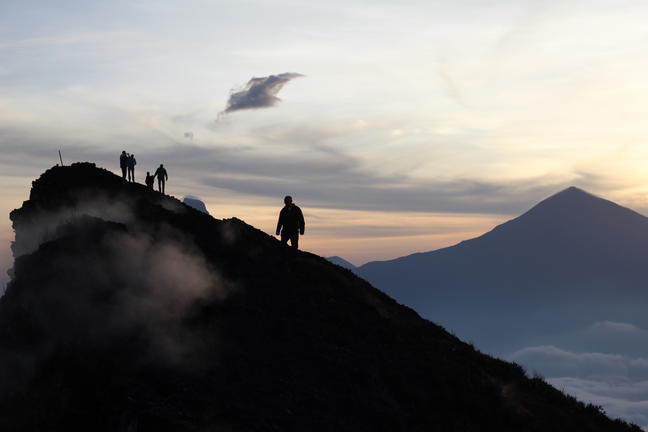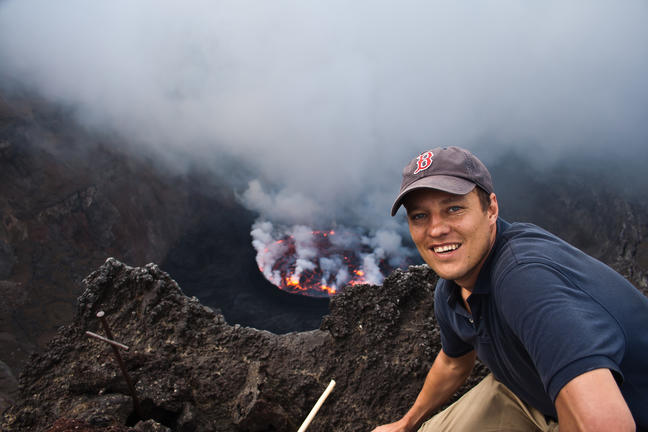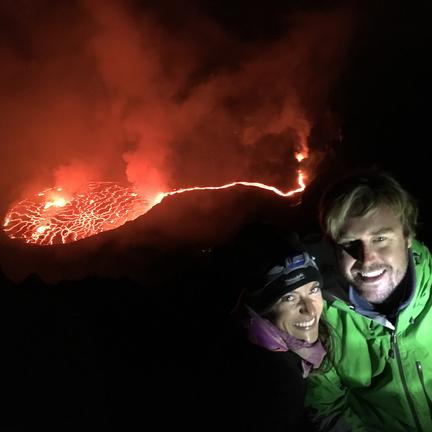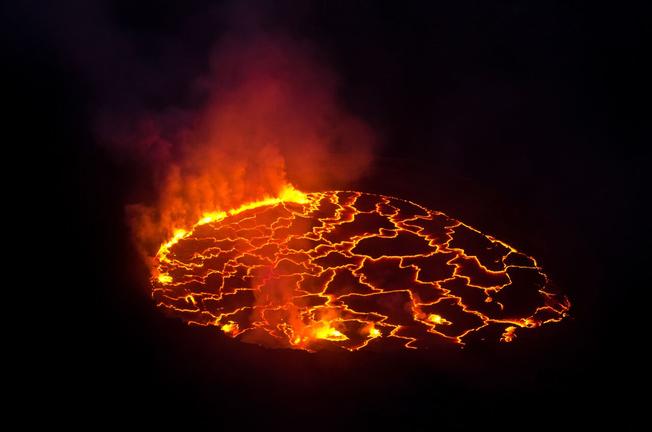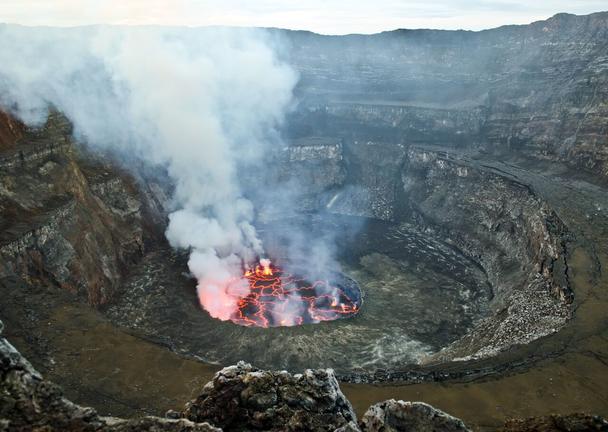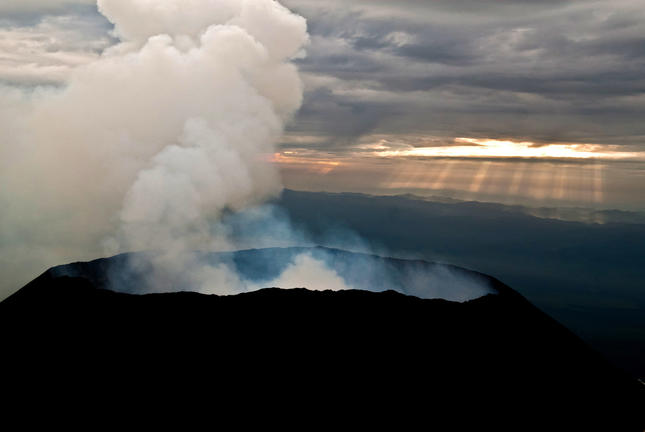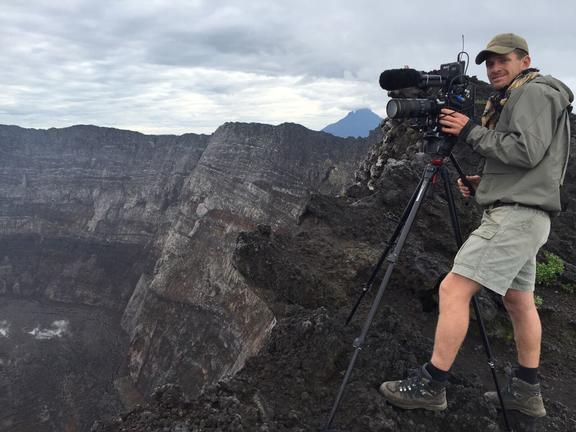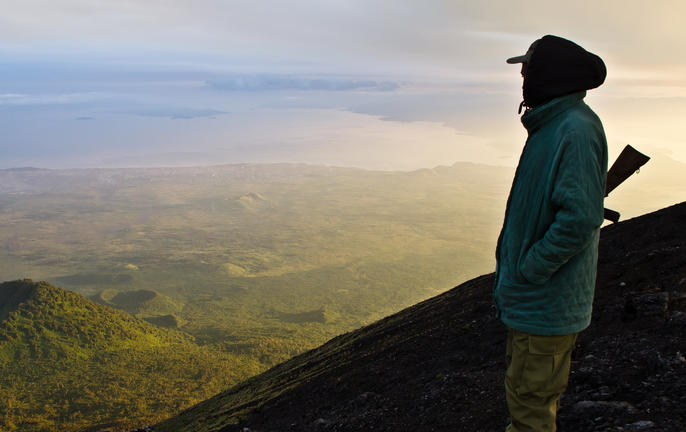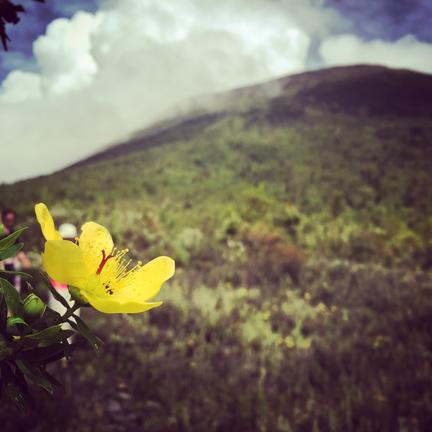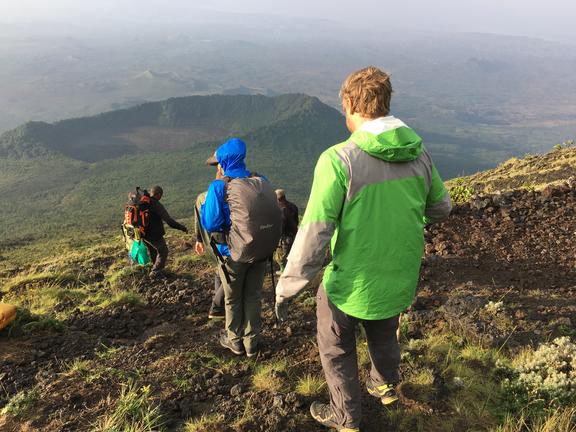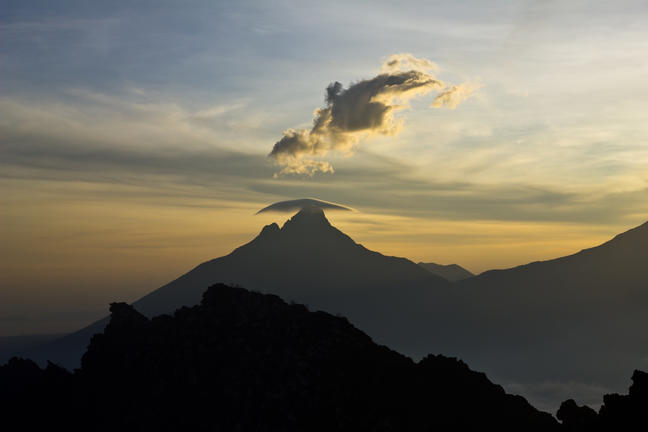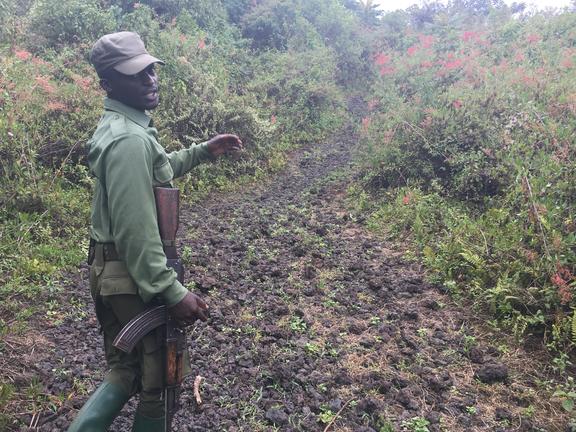Nyiragongo is a beautiful stratovolcano that features the world’s largest lava lake with a diameter of 200m. The volcano’s forested lower slopes are home to a variety of animals, including chimpanzees, monkeys, and bushbuck. The impressive crater at the top is between 1 to 1.2 km in diameter and about 900m deep. From the rim, you can peer down into the crater and view the active lava lake.
Nyiragongo has only erupted twice. Once in 1977 and again in 2002. The last eruption in January 2002, had an estimated 20 million cubic meters of lava rushing downhill at speeds of over 60km/hr. It destroyed at least 17% of Goma city and displaced more than 120,000 people.
Treks to the summit of Nyiragongo volcano begin at the Kibati patrol post, which is approximately 25 minutes by car from Goma. The patrol post is approximately a 1-hour drive from the Mikeno Lodge in Rumangabo. Park rangers lead all treks and it is obligatory to hire a porter (unaffiliated with the park). The time required to reach the summit depends on the average fitness of each group, but typically takes between 4 to 7 hours.
Altitude sickness can be an issue for some because the climb starts at 1,989m (6,525 ft.) and ascends to 3,470m (11,382ft). Which means you will hike almost 2,500m (6,000ft.) in a short period of time. Taking your time and proper hydration are the best ways to adapt to the change in altitude. People prone to Acute Mountain Sickness (AMS) should speak to their physicians about taking preventative measures before making the climb. It is possible for fitter people to climb up and descend in one day, though we do not recommend this. The vast majority choose to overnight in the basic accommodations available at the top (included in the permit fee) because the best time to view the lava lake is at night.
The hike
There are 4 scheduled breaks during the hike, but more can be taken if necessary. It is possible to decide to return back to the base if the hike gets too tough. You can also decide to hike slowly and still reach the summit within 7 or 8 hours, which will aide your acclimatisation.
The hike is divided into the following sections:
Section 1- Roughly 1 hour
A warm-up hike through the forest floor. Here you are mainly covering distance and not gaining much altitude. Beware that it can be a bit slippery when wet.
Section 2: Roughly 1.5 hours
This is where the climbing part starts as the gradient gradually increases. You are mostly walking on an old lava flow, so this is a hard uneven surface and has parts with some loose scree. You need to be careful here as the loose scree can make you slip and one can quite easily sprain their ankle.
Section 3: Roughly 1 hour
The terrain changes as you enter another section of forest. The gradient increases even more, making it a tougher climb, however, there is less scree and more stretches of smooth lava rock to walk on. The rock is not as slippery as it looks!
Section 4: Roughly 30 mins
This is the toughest part and the gradient is about 40 degrees, with mostly hard rocky surfaces and some loose scree. By now you can see the summit of the volcano which helps give you some final motivation to finish the hike.
